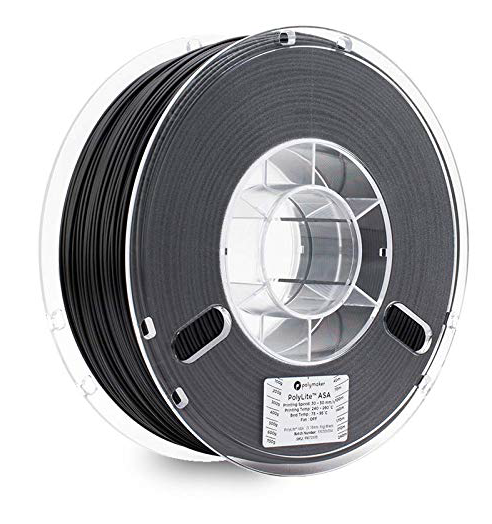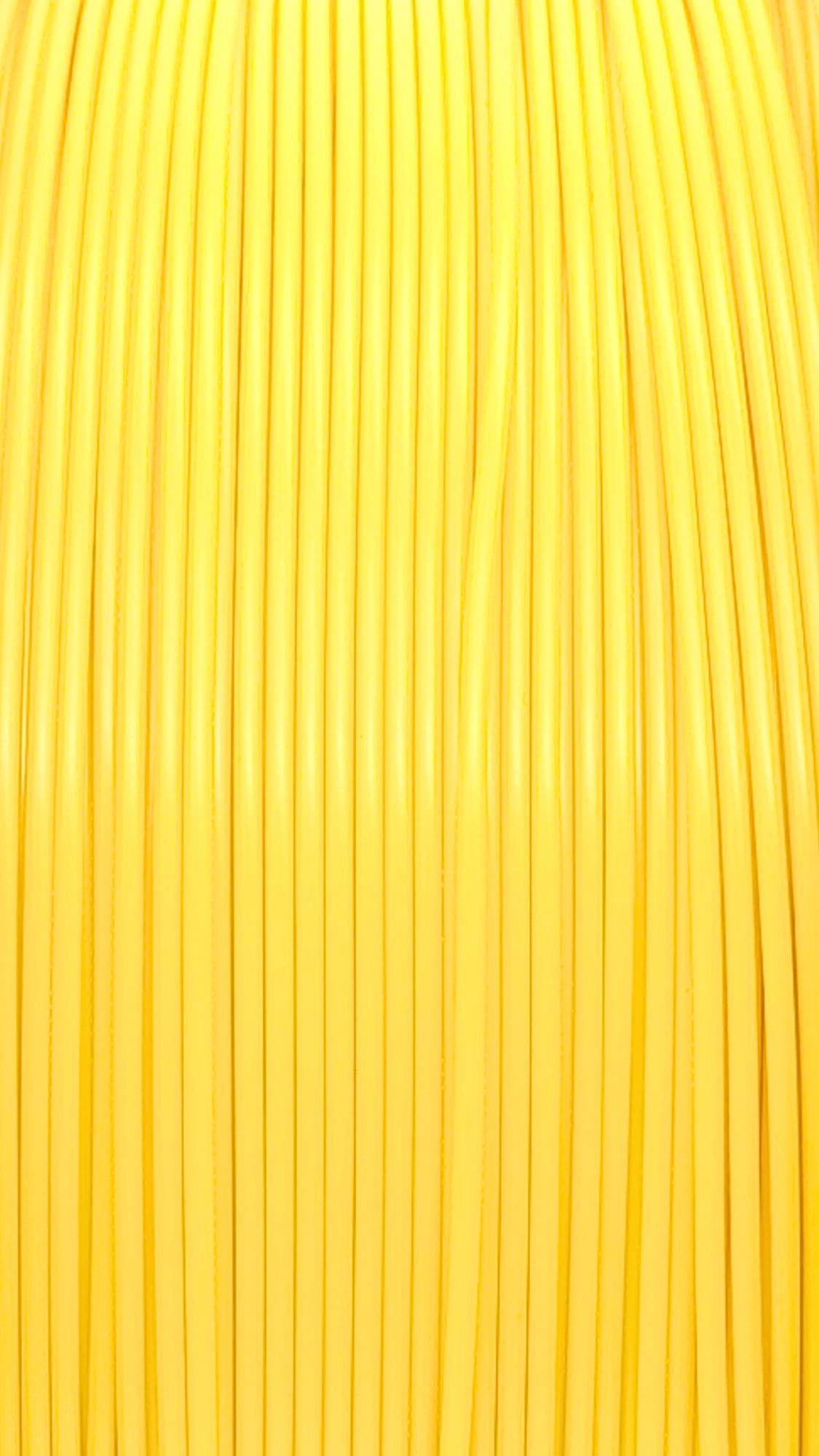Commodity
Polyethylene Terephthalate Glycol-modified (PETG)
Polyethylene terephthalate (PET) is the most commonly used plastic in the world. Best known as the polymer used in water bottles, it is also found in clothing fibers and food containers. While “raw” PET is rarely used in 3D printing, its variant PETG is a popular 3D printer filament.
The ‘G’ in PETG stands for “glycol-modified”, and the result is a filament which is clearer, less brittle, and most importantly, easier to use than its base form. For this reason, PETG is often considered a good middle ground between ABS and PLA, the two most commonly used types of 3D printer filament, as it is more flexible and durable than PLA and easier to print than ABS.
When should I use PETG?
When you need a material with slightly improved mechanical and thermal properties compared to PLA or need transparency.
PolyLite™ PETG
PolyLite™ PETG is just as easy to print as PolyLite™ PLA while offering an additional 20˚C heat resistance and more durability. This lends PolyLite™ PETG to more functional applications where PLA would lack the durability or heat resistance such as lighting fixtures, vibrational parts or more functional product design prototypes.
Mechanical Properties:
Young’s Modulus (X-Y): 2116.8 ± 68.1 MPa
Young’s Modulus (Z): 1898.7 ± 98.5 MPa
Tensile Strength (X-Y): 50.8 ± 0.9 MPa
Tensile Strength (Z): 42.8 ± 2.8 MPa
Elongation at break (X-Y): 8.4 ± 1.7%
Elongation at break (Z):3.3 ± 0.2%
Bending modulus (X-Y): 1898.5 ± 35.5 MPa
Bending strength (X-Y): 69.6 ± 0.8 MPa
Charpy impact strength (X-Y): 2.6 ± 0.2 kJ/m^2
Thermal Properties:
Heat Deflection Temp: 167°F (75°C)
Glass transition temperature: 178°F (81°C)
Vicat softening temperature: 183°F (84°C)
Chemical Resistance:
Effect of weak acids: Not resistant
Effect of strong acids: Not resistant
Effect of weak alkalis: Not resistant
Effect of strong alkalis: Not resistant
Effect of organic solvent: Resistant most
Effect of oils & grease: Not resistant
Source: Polymaker - Technical Data Sheet: Here
Note: All data is for reference only. Zacarias Engineering LLC does NOT guarantee results.
Acrylonitrile Styrene Acrylate (ASA)
ASA (Acrylonitrile Styrene Acrylate) is a commonly used functional thermoplastic 3D printing material. It's similar to ABS (Acrylonitrile Butadiene Styrene) but with improved weather resistance, UV stability, and it's more flexible and harder than ABS making it particularly useful for outdoor applications. It's more flexible and harder than ABS. ASA is also less likely to fade or yellow in sunlight than other plastics and it’s also resistant to chemicals.
You’ll find ASA in Gutters and fittings, mail boxes, mobile home skirting, outdoor furniture, swimming pool pumps, boat hulls, pickup truck caps, and filter housings and spas. In automotive you’ll find ASA in exterior sideview mirror housings, grilles, drip rails, and bumper covers.
Cons:
Decent Heat Deflection: up to 217° F (103° C)
Decent Mechanical properties: Tensile Strength up to 39 MPa
Mildly Hygroscopic
Pros:
Excellent UV Resistance
Good Chemical Resistance
PolyLite™ ASA
We only use PolyLite™ ASA. PolyLite™ ASA is an alternative to ABS with an improved weather resistance. Its UV resistance and excellent mechanical properties make it the good choice for real life application.
Parts have high gloss, good chemical and heat resistance, and high impact strength, even at low temperatures.
Mechanical Properties:
Young’s Modulus (X-Y): 2174.6 ± 41.1 MPa
Young’s Modulus (Z): 1971.6 ± 78.8 MPa
Tensile Strength (X-Y): 39 MPa
Tensile Strength (Z): 30.0 ± 0.5 MPa
Elongation at break (X-Y): 4.4 ± 1.0 %
Elongation at break (Z): 2.4 ± 0.1 %
Bending modulus (X-Y): 1939.7 ± 50.4 MPa
Bending strength (X-Y): 60.9 ± 0.9 MPa
Charpy impact strength (X-Y): 10.5 ± 0.6 kJ/m^2
Thermal Properties:
Heat Deflection Temp: 217°F (103°C)
Glass transition temperature: 208°F (97.8°C)
Vicat softening temperature: 221°F (105°C)
Chemical Resistance:
Effect of weak acids: Resistant
Effect of strong acids: Slightly resistant
Effect of weak alkalis: Resistant
Effect of strong alkalis: Slight resistant
Effect of organic solvent: Not resistant
Effect of oils & grease: Resistant
Source: Polymaker - Technical Data Sheet: Here
Note: All data is for reference only. Zacarias Engineering LLC does NOT guarantee results.
CarbonX™ ASA+CF
CarbonX™ ASA+CF is a high-performance carbon fiber reinforced ASA (acrylonitrile styrene acrylate) filament ideal for anyone that desires a structural component with high modulus, excellent surface quality, dimensional stability, light weight, and ease of printing. Made using 15% High-Modulus Carbon Fiber (not carbon powder or milled carbon fiber). Made using our very popular ASA resin and premium carbon fiber.
Mechanical Properties:
Tensile Modulus (X-Y): 5355 MPa
Tensile Strength (X-Y): 48 MPa
Elongation at break (X-Y): 3%
Bending modulus (X-Y): 5210 MPa
Bending strength (X-Y): 78 MPa
Thermal Properties:
Heat Deflection Temp: 207°F (97°C)
Glass Transition Temp: 221°F (105°C)
Electrical Property:
Surface Resistance: >10^9 (Ohm/sq)
Source: 3DXTech - Technical Data Sheet: Here
Note: All data is for reference only. Zacarias Engineering LLC does NOT guarantee results.


























